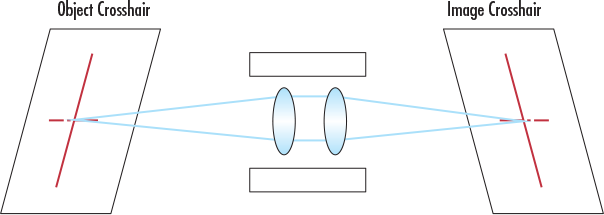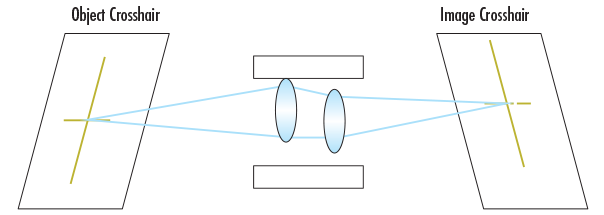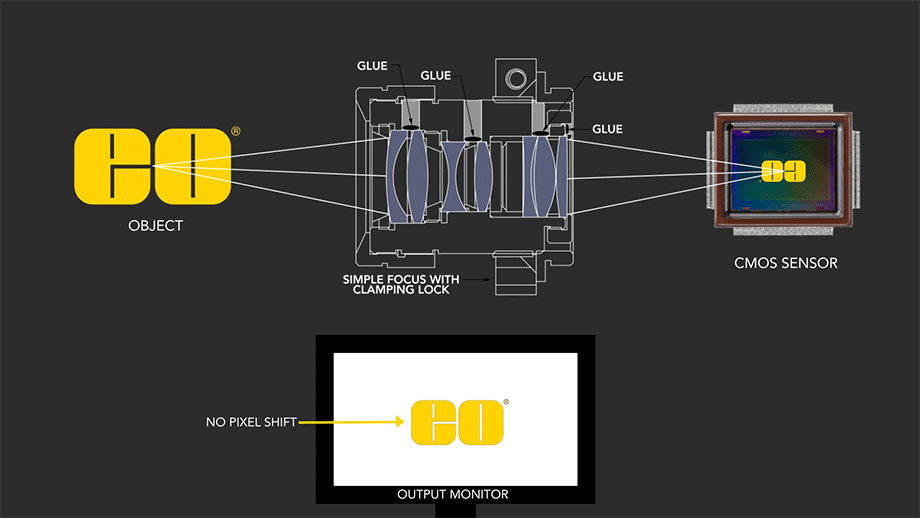

|
|
Ruggedization is Required for Imaging Lenses in Hazardous Environments |
|
|
Not All Ruggedization Created Equal |
|
|
Emerging Applications Require More Advanced Ruggedization |
|
|
Ruggedization Requirement: Reducing Pixel Shift and Maintaining Pointing Stability |
Imaging lenses used in harsh environments have special requirements beyond those of standard imaging lenses. Lenses used in factory automation, robotics, and industrial inspection are often exposed to vibrations, shocks, temperature changes, and contaminants. Ruggedization is the act of strengthening a lens to resist these harsh environments and is growing in importance because of the worldwide surge in emerging markets like robotics, automation, and autonomous systems. Most imaging lenses labeled as ruggedized, tough, or harsh environment utilize Industrial Ruggedization to reduce cost and prevent changes in focus from shock and vibration. This is done by simplifying the mechanics. However, Industrial Ruggedization is not sufficient for the most demanding applications where the calibration of an imaging system must be maintained. A more robust type of ruggedization, called Stabilized Ruggedization, is required to reduce pixel shift and truly protects lenses from shock and vibration.
In Industrial Ruggedization, lens mechanics are simplified by replacing the adjustable iris with a fixed aperture stop and replacing the non-rotating double threaded barrel with a simple single thread and a rigid locking mechanism, such as a clamp, nut, or set screws. This reduction of moving parts decreases the cost of the lens and adds additional stability compared to standard imaging lenses, making it less likely that the focus of the lens will be affected by weak shocks and vibrations. However, excessively strong shocks and vibrations may still decenter the individual optics inside the lens and cause pixel shift - meaning that objects are mapped to the incorrect location on the image sensor (see Figure 1 and Figure 2).


Stabilized Ruggedization protects lenses from stronger shocks and vibrations compared to Industrial Ruggedization, and also maintains optical pointing and positioning. Stabilized Ruggedized lenses feature the same mechanical simplifications of Industrial Ruggedization, such as removing the iris and using a simpler focus, but all of the individual elements in the lens assembly are glued into place to prevent movement within the housing. This maintains the focus under strong shock and vibration, while preventing pixel shift, which is essential for calibrated imaging systems. See Figure 3 and Figure 4 to see how this elimination of pixel shift impacts imaging performance. Stabilized Ruggedization allows a calibrated device to be built in one location and shipped to another without losing its calibration. Most lenses labeled as ruggedized are Industrial Ruggedized and do not feature the added benefits of Stabilized Ruggedization.



Learn more about the different types of ruggedization for imaging lenses in our webinar presented by Greg Hollows, Director of the Imaging Business Unit at Edmund Optics®.
Edmund Optics® is a premier provider of Stabilized Ruggedized imaging lenses and customizes lenses for ruggedization upon request. These lenses are ideal for harsh environments involving shock and vibration, along with calibrated imaging applications including autonomous vehicles, vision-guided robotics, measurement and gauging, and object tracking.
|
|
Stabilized Ruggedized to minimize pixel shift after shock and vibration |
|
|
Individual lens elements glued in place to maintain optical pointing stability |
|
|
Simplified focus mechanism with wide range of fixed aperture options |
|
|
Stainless steel locking C-Mount clamps |
 Where can I find more information on the various types of Ruggedization?
Where can I find more information on the various types of Ruggedization?
 My application requires different specifications than those listed for your standard ruggedized lenses. Are custom options available?
My application requires different specifications than those listed for your standard ruggedized lenses. Are custom options available?
Yes, Edmund Optics® has a staff of experienced optical and mechanical designers, along with world class manufacturing, to support prototypes and deliver the lens you require for your application. For more information, please contact our Technical Support Engineers.
 I’m currently using a different Edmund Optics® imaging lens. Can you ruggedize my lens?
I’m currently using a different Edmund Optics® imaging lens. Can you ruggedize my lens?
Yes, we can ruggedize the lens and also do a number of other modifications such housing modification, working distance adjustment, filter or liquid lens integration, aperture replacement, and more. For more information, please contact our Technical Support Engineers.
 Are Zemax prescription files available for your standard ruggedized lenses?
Are Zemax prescription files available for your standard ruggedized lenses?
 Can ruggedization make lenses waterproof?
Can ruggedization make lenses waterproof?
or view regional numbers
QUOTE TOOL
enter stock numbers to begin
Copyright 2025 | Edmund Optics BV, De Maas 22B, 5684 PL Best, The Netherlands
California Consumer Privacy Acts (CCPA): Do Not Sell or Share My Personal Information
California Transparency in Supply Chains Act
The FUTURE Depends On Optics®